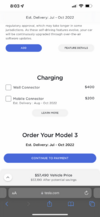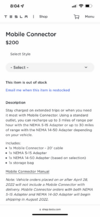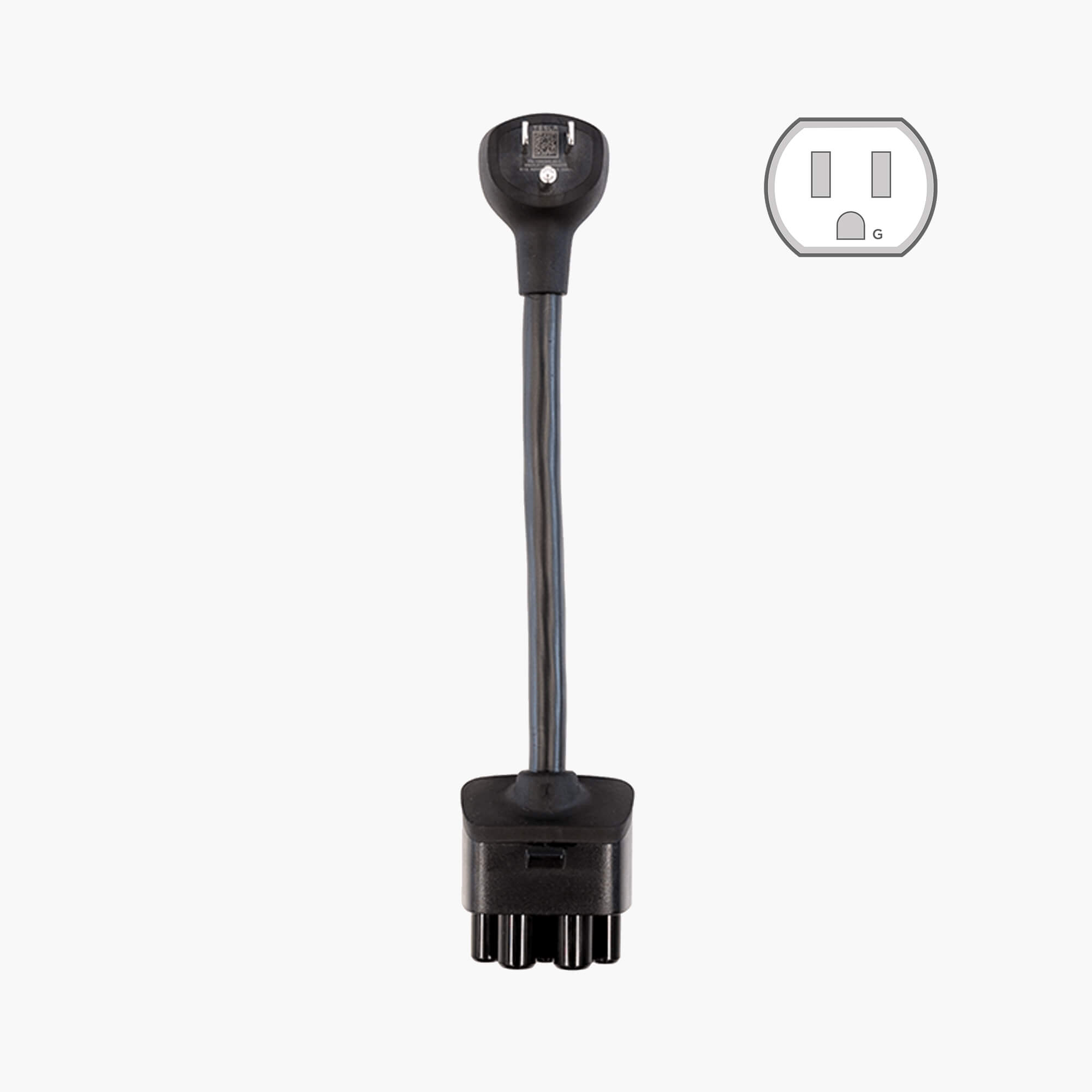...Lectron NEMA 5-15 Level 1 EV Charger actually charges faster than the Tesla Mobile Connector...
Any pros / cons...
I agree with other commenters. The Tesla Generation 2 Mobile Connector is the (much) better choice. Why?
- Utility -- With the NEMA 14-50 adapter-plug that I believe once again comes with the Tesla Gen2 Mobile Connector, you can charge using 240v (NEMA 14-50) wall outlets. (Other Tesla and aftermarket adapter-plugs, sold separately, are available for other wall outlet types.)
- Convenience -- The Tesla connector does NOT require use of a J1772 adapter to charge a Tesla car.
- Reliability -- I suspect that the Tesla connector is the better made product and will hold up for a longer time without problems.
- Peace of Mind -- If this is a consideration for you, you can be sure of complete and total (electrical/communication) harmony between a Tesla car and a Tesla connector.
As others have pointed out, you probably do
not want to normally try to charge using a 120v wall outlet. It is just too slow. So Lectron's advertised argument (claiming faster speed), is just a(n intentional?) distraction maneuver (even if true, which it probably isn't). Unless you can afford to have your car sit around for a couple of days at a time (to charge from 20% to 80%), for normal home use you will probably want and need a 240v power source.
Perhaps the most popular is a 240v, 50 amp NEMA 14-50 wall outlet* mentioned above (at the end of #6 gauge house wiring on a GFI 50-amp circuit breaker). A dedicated 50-amp circuit (installed from your breaker panel to a wall outlet) will allow you to easily charge overnight at 40 amps, 32 amps, or even less. (You can control the amperage charging rate from within your car. Most Tesla cars can charge at up to 48 amps, but that power level (which, btw, would require a 60-amp circuit) is overkill and not necessary for most overnight charging.)
All that said, arguably the best home charging setup involves a Tesla (or other good brand of) wall connector (on a properly-installed 240v, 50a or 60a circuit). Though more expensive, wall connectors can be safer, more convenient, weather-proof, and offer other advantages.
Take a look at this post:
Choosing A Tesla Home-charging Option. Perhaps it can help you select a home charging setup?
_____
* By the way, if you do decide to install a NEMA 14-50 wall outlet, do
NOT buy a cheap receptacle (like the ubiquitous Leviton model) from a hardware or big-box store. Instead, purchase a Hubbell (9450a), Bryant (9450fr), Cooper (5754n), or other good commercial-grade wall receptacle; install everything properly; then keep a dedicated mobile connector/cable permanently plugged into the outlet. (Why? Wall outlets do not tend to hold up well to regular, repeated plugging and unplugging over time. Also, a 240v plug is
large. You don't want to be man-handling that thing on a regular basis.)
All the information in this post can be found in other posts throughout the TMC forum. (Use the "Search" function.)





